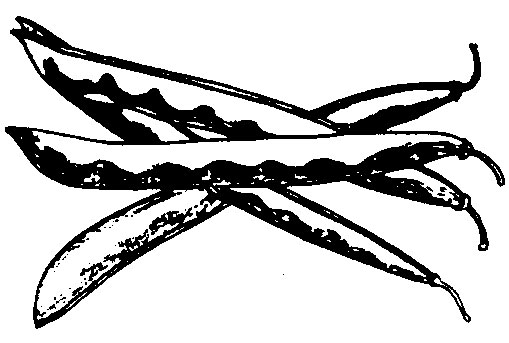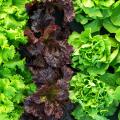Peas-Southern
Southern Peas

Field pea, cowpea, and protepea all are names used for the southern pea. There are numerous types and varieties with many old family favorites in the seed trade. Gardeners classify peas several different ways: seed color, pea size and shape, and pod color. Small-sized pea and pod types are referred to as lady peas. Other common types are crowders, creams, blackeyes, pinkeyes, purple hulls, and silver skins.
Do not plant this warm-weather vegetable early in cool soil. Peas grow in all soil types but are sensitive to high levels of nitrogen fertilizer and respond by making all vine and few pods. Older varieties have a tendency to make a vine; newer varieties are semi-vining to bush type.
Seed quality and variety are important to success when growing peas. Varieties such as Mississippi Silver, Mississippi Purple, Magnolia Blackeye, Mississippi Cream, and Mississippi Pinkeye have multiple disease resistance (fusarium, root knot nematode, and several strains of virus) and perform better than varieties that possess no disease resistance, such as California Blackeye, Knuckle Purple Hull, and Bunch Pinkeye.
Major disease problems are fusarium wilt, several viruses, root knot nematodes, and pod rots. The most serious insect problems are cowpea curculios, aphids, and stink bugs.
Varieties
- Louisiana Quickpick—bears pink-eyed, purple-hulled pods above the foliage.
- Magnolia Blackeye—green pea is light green to cream with black eye; mature green pod is light green to cream; mature pods are tan; plant is small, and pods are not held up well; plants have multiple disease resistance.
- Mississippi Purple—brown crowder type; green pea is large, turning to brown seed; mature pod light green to purple turning brown when dry; semi-vining type plant with multiple disease resistance.
- Mississippi Silver—brown crowder type; green pea is large turning to brown seed; mature pod is green turning silvery and then yellow; large, semi-vining plant with multiple disease resistance.
- Pinkeye Purple Hull-BVR—a typical pinkeye type but with resistance to blackeye cowpea mosaic virus.
Publications
News
Did you know yellow squash is in the pumpkin family and are 95 percent water?
Tomatoes are a popular crop, both for commercial growers and home gardeners. Even the best tomato growers run into problems along the way! We put together a simple, easy-to-follow guide to help you spot a few of the most common tomato troubles gardeners see.
Did you know lettuce was one of the first vegetables brought to America by Christopher Columbus? What a great fun fact!




